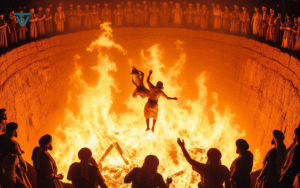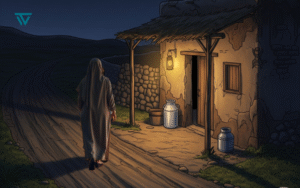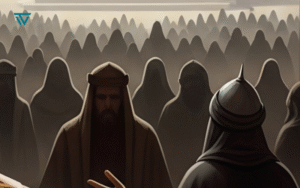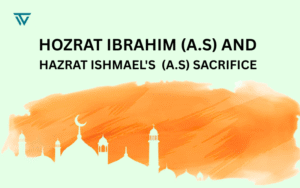Imam Ghazali Story: A Parable on Life and Mortality
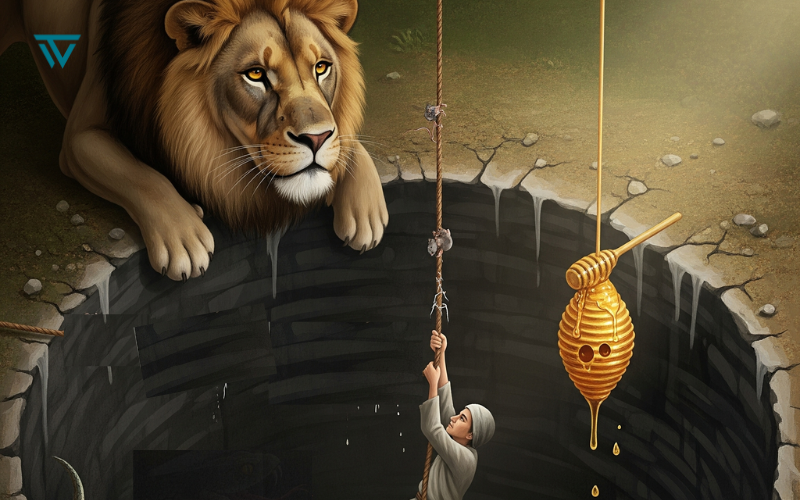
0 people are currently reading this article
Imam Ghazali, a revered Islamic scholar and philosopher, once shared a remarkable Imam Ghazali story. This parable offers profound insights into human life and the often-overlooked dangers surrounding us. It’s a tale that compels us to reflect on our journey and the ultimate truths we face.
The Wayfarer’s Perilous Predicament
The story begins with a person walking through a dense jungle. Suddenly, they notice a lion hot on their heels, pursuing them relentlessly. Terrified for their life, they run as fast as they can. After a desperate sprint, they spot a dry, waterless well. Without hesitation, they close their eyes and leap into it.
As they fall, their hand miraculously grasps a dangling rope, and they hold on tight, suspended in the air. Looking up, they see the very lion that was chasing them now waiting at the well’s edge, ready to pounce. Looking down, a huge snake lurks at the bottom, its jaws open, anticipating their fall.
The Imam Ghazali Story Continues: Caught Between Life and Peril
As if these immediate threats weren’t enough, the person then spots two tiny, insidious dangers: a white mouse and a black mouse relentlessly gnawing at the rope that supports them. These mice are slowly but surely cutting away their only lifeline.
In this overwhelming and desperate situation, unsure what to do, their gaze drifts to a beehive attached to the well’s side, just within reach. Driven by an unexpected impulse, they dip a finger into the honey and taste it. The sweetness is so intense that, for a few brief moments, they completely forget about the roaring lion above, the gaping snake below, and the gnawing mice. This fleeting pleasure distracts them entirely from their multi-faceted peril, making their inevitable fall even more certain. This part of the Imam Ghazali story highlights a crucial human tendency.
Imam Ghazali’s Profound Interpretations
Imam Ghazali provides a deep explanation for this powerful parable, revealing its hidden meanings:
- The lion represents death, which is constantly pursuing us. There’s no escaping it; it follows us wherever we go.
- The snake at the bottom of the well symbolizes the grave. It’s the place that awaits us all, our ultimate resting place.
- The rope signifies our life itself, the fragile thread by which we cling to existence. It’s our temporary support.
- The white mouse is the day, and the black mouse is the night. Both day and night are continuously, slowly, and steadily diminishing our lifespan, pushing us closer to death with every passing moment.
- And the beehive of honey symbolizes the Dunya (this worldly life). Even a tiny taste of its sweetness can be so captivating that it makes us forget the terrifying, four-sided dangers surrounding us. The temporary allure of the world distracts us from the crucial realities of our journey. This section of the Imam Ghazali story is particularly impactful.
Conclusion
Imam Ghazali’s story isn’t just a simple tale; it’s a profound mirror reflecting the challenging realities of human existence. It reminds us that often, immersed in the fleeting allure of this world (the Dunya), we overlook the ultimate truths: the inevitability of death and the reality of the grave. This parable serves as a silent warning. It urges us not to let temporary pleasures blind us to our ultimate destiny. Before our life’s rope is severed, it’s a powerful call to prepare for the journey that awaits us all. This enduring Imam Ghazali story continues to inspire reflection across generations.
